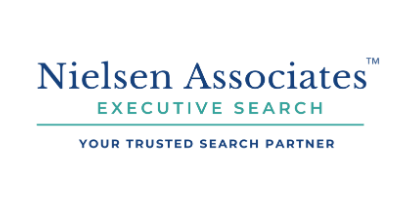Onboarding for Everyone

Onboarding is a retention strategy that starts before they do.
Recruit. Hire. Train. Repeat.
Recruit. Hire. Train. Repeat.
The turnover merry-go-round is expensive, and many mid-to-large businesses devote a lot of energy to figuring out how to stop the ride.
Retention strategies are an answer, and you can put them into play early — during recruiting and onboarding.
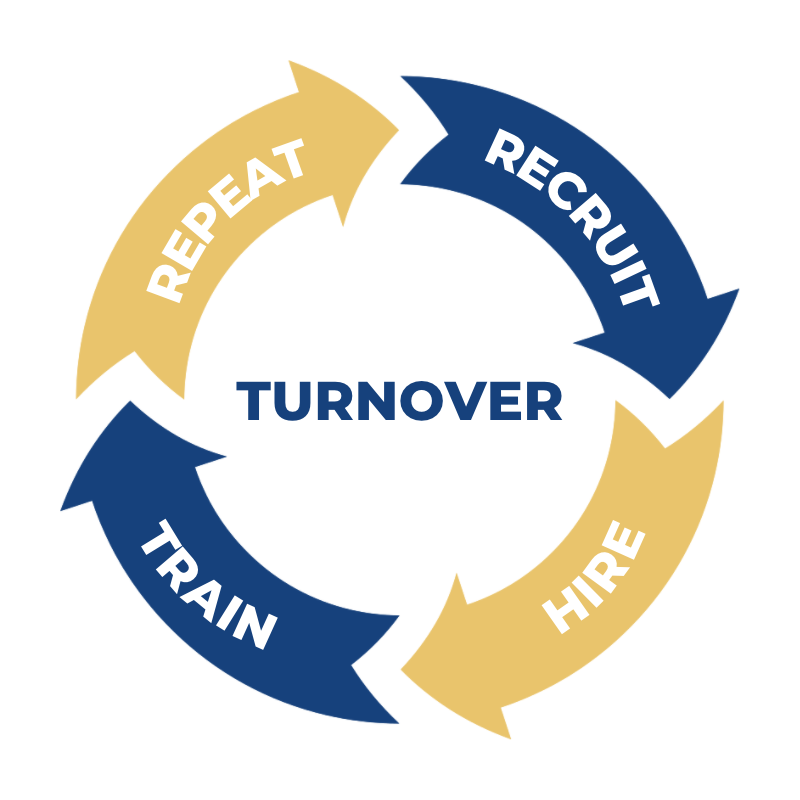
How expensive is turnover?
We’d love to have a statistic from the experts to answer this simply and authoritatively. But the cost is different for every company.
We’ll start with cost-per-hire (CPH,) which depends on many factors, including your industry, the seniority and skill level of an open position, and the calculator that you’re using. For example, cost-conscious companies factor in technology, advertising, and employment marketing related to each position.
Here’s the simplest formula to calculate your CPH for a position:
(internal recruiting costs + external recruiting costs)
_________________________________
number of hires
You can amplify the accuracy of CPH by getting detailed when you identify your internal and external costs. You may want to factor in:
- Recruiters Compensation
- Hiring Managers Compensation
- Agency Fees
- Technology Costs
- Ads + Employment Marketing
- Recruiting Accommodations, such as travel and relocation expenses
- Employee Referral Bonuses + Sign-on Bonuses
Where do you stand?
If you did some calculations and you’re wondering how you stack up, SHRM published these benchmarks in 2017:
| 25th Percentile | 25th Percentile | 75th Percentile | Average | |
|---|---|---|---|---|
| Cost-Per-Hire | $500 | $1633 | $4669 | $4425 |
| Executive-Cost-Per-Hire | $1300 | $5000 | $18000 | $14936 |
Add new-hire training costs on top of CPH, and you’ll get a real feel for how expensive talent acquisition is. And turnover (or how to retain valued employees) is why leadership teams everywhere are making company culture and employee experience top strategic priorities.
How does Turnover affect Teams?
High turnover (also known as 'churn') has a big impact inside and out. Workplaces with high turnover experience decreased productivity and lowered morale, which leads to more turnover. There’s a negative impact on internal culture, which eventually impacts quality, services, and clients. Suddenly, turnover is messing up customer experience. Whoa. Ultimately, turnover leads to customer attrition (and revenue loss.)
How does onboarding help?
Effective onboarding programs integrate (or assimilate) new employees into their role at your organization. The Association for Talent Development says onboarding “provides a fast track to meaningful, productive work and strong employee relationships.” Here are some stats:
- Studies show that about 70% of employees with a structured onboarding program remain at a company for at least 3 years.
- Meanwhile, only 12% of employees feel that their employer did a great job onboarding them.
According to employees, we have work to do. One reason companies struggle to engage new hires is a dependance upon standardized programs, such as orientation and employee handbooks. It’s important to note that onboarding is not the same as new hire orientation. Let’s look at the difference.
Orientation is a standard program that every new hire needs to understand company values, vision, mission and culture. It may include compliance training, company policies, and a deep-dive on benefits and perks. It’s foundational info for everyone.
Onboarding is an individualized plan designed to help a new hire be successful and productive in their specific role.
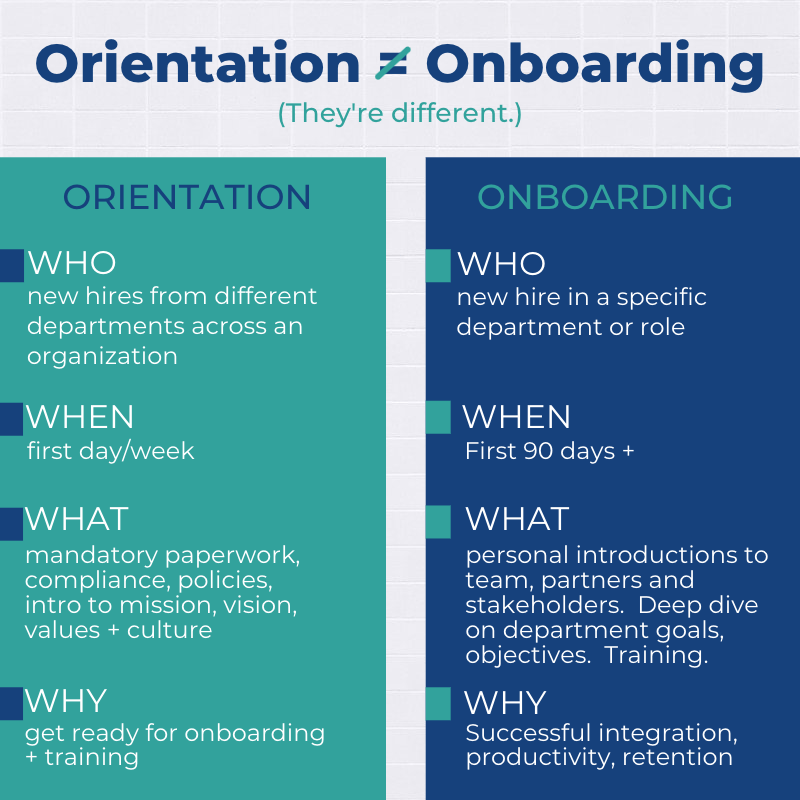
So if it’s not orientation, what exactly is onboarding?
Well-designed, standard orientation programs are valuable. Every company should have one. They are the first component of the overall onboarding experience that you provide.
After orientation, onboarding provides a specific, individualized action plan to help a new employee strike an optimal balance of learning and relationship building more directly related to their functional role. Relevance is high. Activities during onboarding set new hires up for productivity, success, and longevity.
It begins with standard orientation, and then the focus shifts to a new hire’s specific role.
There is an emphasis on relationship building AND becoming fully productive in a realistic timeframe that balances developmental needs and speed.
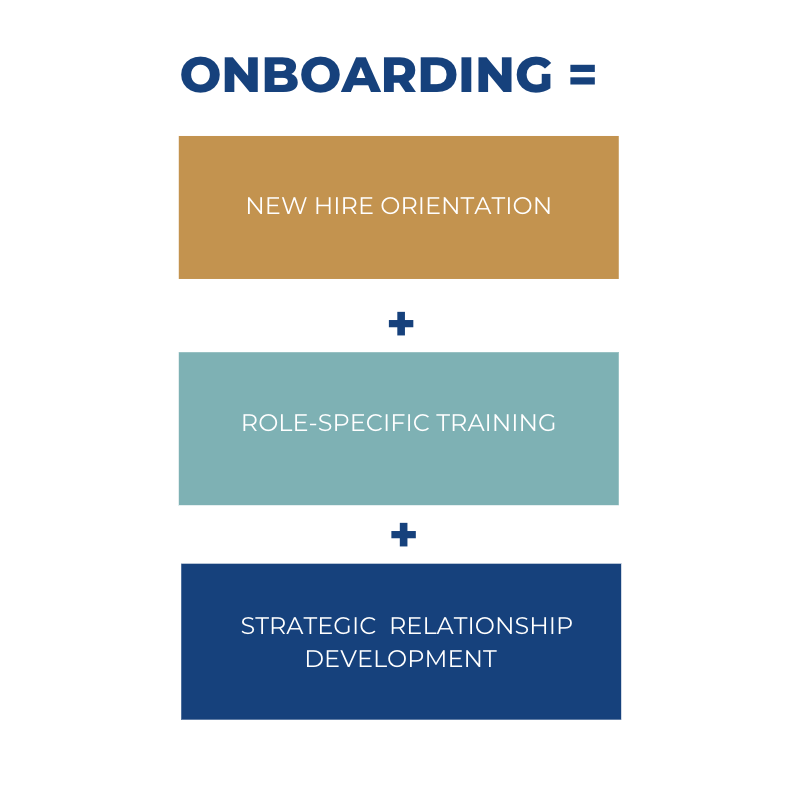
Is onboarding a retention strategy? Or is it part of Employee Experience?
Yes and yes. Onboarding is a retention strategy with proven ROI, and it’s where and when employee experience begins.
If it’s individualized, how do you design an onboarding program?
To deliver a consistent and highly individualized onboarding experience, keep the focus on high level goals — relationship building, learning, and productivity — and then get granular. Many companies design comprehensive assimilation checklists. Assimilation checklists contain a detailed set of developmental strategies to help employees reach important milestones during their first 30, 60, and 90 days of employment. Checklists are first designed for universal use, and can then be tailored for a particular department or business function. When someone new starts, Hiring Managers and Human Resources partner together to create an onboarding experience that’s individually relevant.
Assimilation checklists are as unique as your organization, but here’s a small sampler of a visual framework to inspire your design.
Onboarding Goal:
Relationship Building
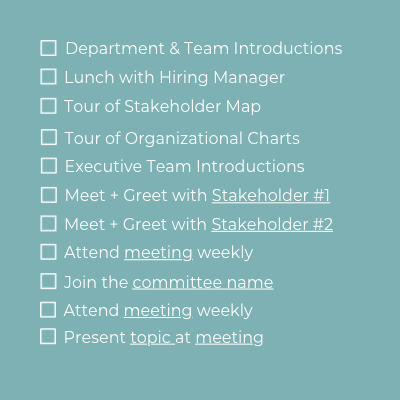
and beyond...
Onboarding Goal:
Learning + Productivity
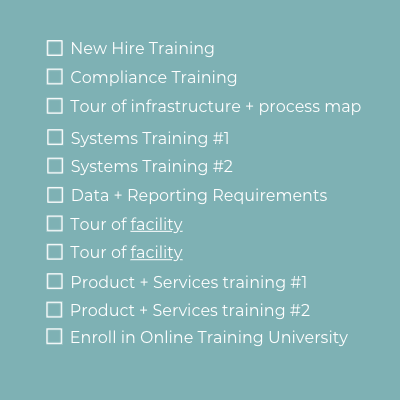
and beyond...
Newly hired executives are often overlooked. But here’s why companies should go even further to onboard them:
The cost per-hire for executives is much higher, and executive roles are more critical to a company’s success. Plus, joining an organization as a new executive “from the outside” is tough. There’s pressure to make an impact fast, and many companies expect that leaders know how to self-assimilate, even though failure rates for newly hired executives are estimated at 40%. In challenging business environments, failure rates climb even higher, for example when there’s a cultural or financial crisis to address. Even in the best of circumstances, new executives have more to contend with simultaneously — more stakeholders, more to assimilate, more to assess, more politics, and challenging decision-making that impacts others.
FIVE REASONS NEW EXECUTIVES FAIL
1. They fail to build rapport and trust with staff, peers, and stakeholders.
2. Performance objectives and expectations are not clearly defined.
3. Corporate politics are an obstacle (toxic workplace.)
4. Their management philosophies and strategies are out of alignment (cultural fit.)
5. There isn’t a strategic, formal process to assimilate executives into the organization.
When designing an onboarding program for new executives, pay careful attention to proactively address and dissolve obstacles to their success. Here are some ideas:
- Focus heavily on relationship-building and provide opportunities where new executives can authentically assess group dynamics, how decisions are made, and how work gets done at your company. This may involve having them sit in on meetings that are not directly related or relevant to their role.
- Make everyone at your organization part of the strategy. Communicate as early possible so that existing team members can prepare, arrange meet and greets, and one-on-one conversations with stakeholders. Plan a variety of interactions where new executives can break the ice and go beyond.
- Create a schedule for regular feedback sessions with human resources, the hiring manager, and a business mentor or coach throughout the executive onboarding period.
- Design executive onboarding programs with empathy and wellness in mind. A career change is stressful for a myriad of reasons, particularly for new leaders. Emphasize work-life balance and stress reduction throughout the process.
Fill open positions fast with Nielsen Associates.
Our recruiters are industry experts and we have a deep network of talent. We can quickly present highly qualified candidates for any Marketing, Human Resources, or Finance & Accounting role.
Request a free consultation with a recruiter to learn more about our range of services.
